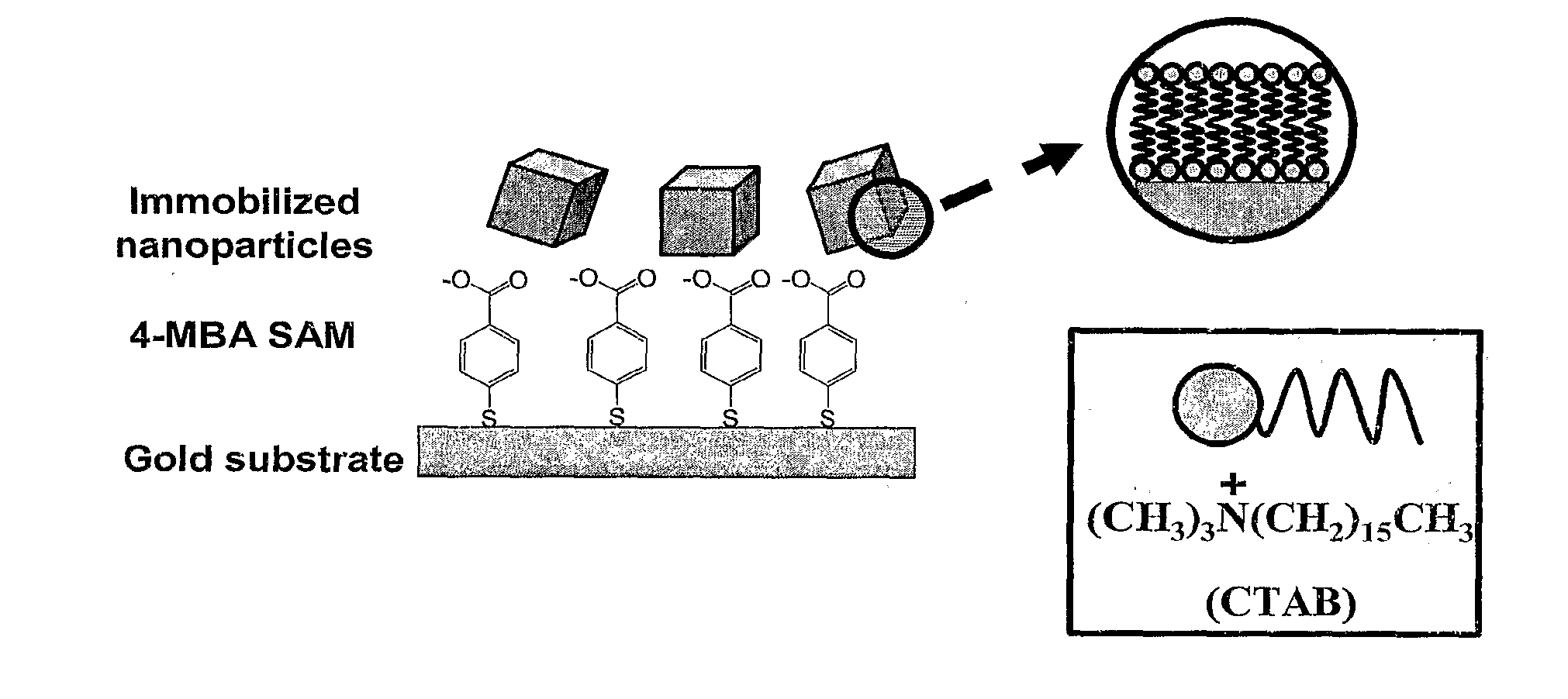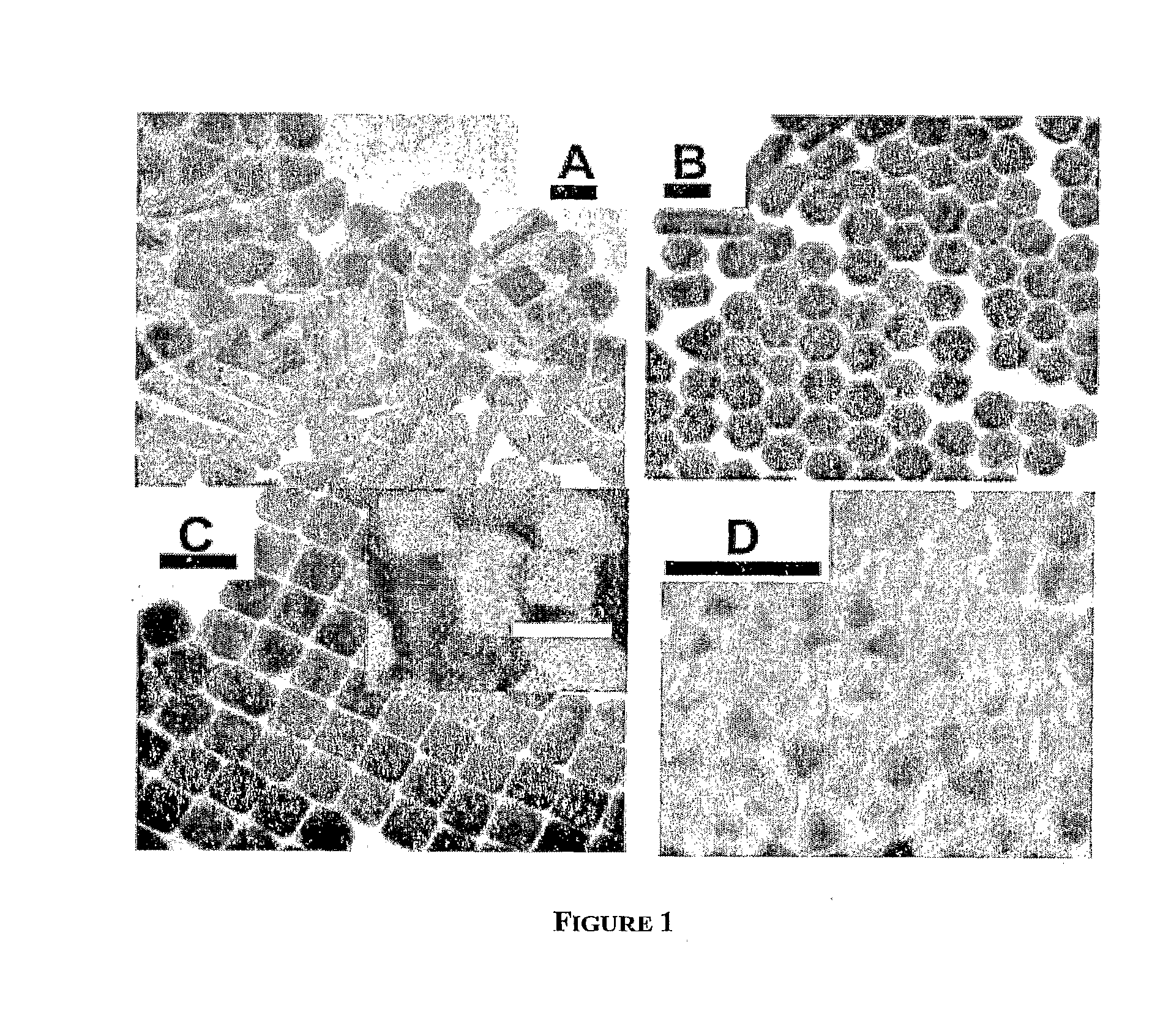Surface enhanced raman spectroscopy using shaped gold nanoparticles
a raman spectroscopy and gold nanoparticle technology, applied in the field of surface enhanced raman spectroscopy using shaped gold nanoparticles, can solve the problems of limited success in gaining control over the shape of nanocrystals, low yield of desired size and shape, and no reports on sers on nanorods. , to achieve the effect of enhancing raman signal, enhancing raman signal, and enhancing raman signal
- Summary
- Abstract
- Description
- Claims
- Application Information
AI Technical Summary
Benefits of technology
Problems solved by technology
Method used
Image
Examples
Embodiment Construction
utions correspond to the shapes given in FIGS. 1A, 1B, and 1C, respectively. d: cubic particles corresponding to that given in FIG. 2A. e: rectangular particles corresponding to that given in FIG. 2C. f: tetrapods corresponding to that given in FIG. 3A.
[0026]FIG. 5 shows UV-vis-NIR absorption spectra of (a) spheres (--), aspect ratio 3.2 rods (-----), aspect ratio 4.4 rods (.....), aspect ratio 16 rods (--), (b) dogbones (--), cubes (.....), tetrapods (--), and blocks (-----).
[0027]FIG. 6 shows SEM and TEM (inset) images of (a) aspect ratio 16 rods, (b) aspect ratio 3.2 rods, (c) aspect ratio 4.4 rods, (d) spheres, (e) tetrapods, (f) dogbones, (g) cubes, and (h) blocks immobilized on 4-MBA SAMs.
[0028]FIG. 7 shows a scheme of the nanoparticle-SAM sandwich geometry for SERS of 4-MBA.
[0029]FIG. 8 shows Raman spectra of (a) 0.01 M 4-MBA and (b) 4-MBA SAM on gold, and SERS spectra of 4-MBA SAMs on gold with immobilized (c) spheres, (d) aspect ratio 3.2 rods, (e) aspect ratio 4.4 rods, (f...
PUM
 Login to View More
Login to View More Abstract
Description
Claims
Application Information
 Login to View More
Login to View More - R&D
- Intellectual Property
- Life Sciences
- Materials
- Tech Scout
- Unparalleled Data Quality
- Higher Quality Content
- 60% Fewer Hallucinations
Browse by: Latest US Patents, China's latest patents, Technical Efficacy Thesaurus, Application Domain, Technology Topic, Popular Technical Reports.
© 2025 PatSnap. All rights reserved.Legal|Privacy policy|Modern Slavery Act Transparency Statement|Sitemap|About US| Contact US: help@patsnap.com



